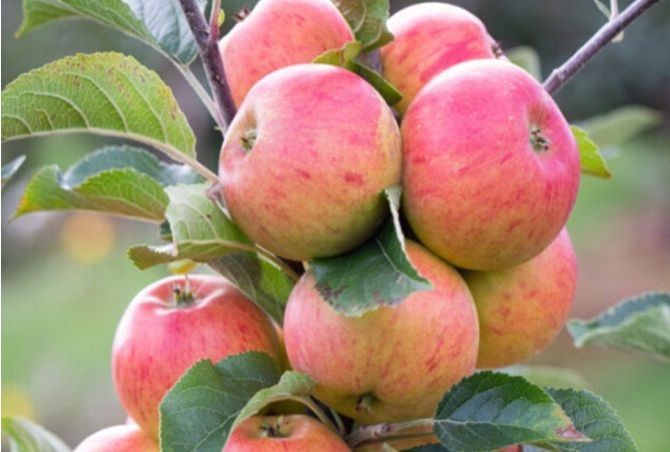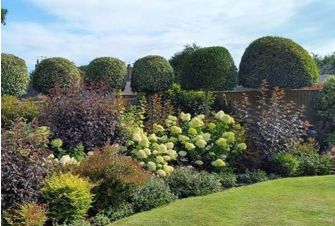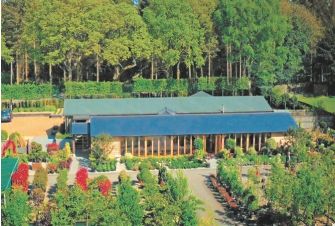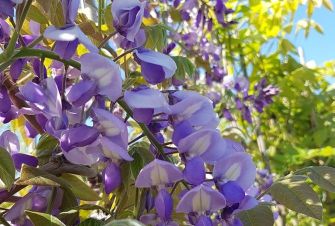Fruit trees suitable for every size of garden
If you have room for just one tree in your small garden, consider a fruit tree! It will give you spring blossom; bless you with delicious produce; provide a display of autumn colour; give you year-round structure AND add to the biodiversity and wildlife interest in your outdoor space. There are even some fruit trees small enough to go into a large pot.
If you want to find a fruit tree that is a perfect fit, the most important thing to consider is the part that you can't see at a glance - the rootstock. This governs how large your tree will grow. You will often have a choice of rootstocks, so don't ignore this part of the labelling system. Most fruit trees are hybrids, meaning that they comprise two plants that have been joined together by means of a graft. The flowering and fruiting part of the tree is called the scion.
It is even possible to purchase a 'family' fruit tree such as an apple that provides several different types on the one tree. The apple varieties are normally chosen so that they can cross-pollinate each other, meaning that the bees and pollinating insects don't need to travel too far! There is one particular tree in the USA known as the Frankenstein tree , or the tree of forty fruits, that is capable of producing 40 diffferent types of fruit! It was a project of an arts professor at Syracuse University, in New York, aiming to create a living 'sculpture' and create a work that transcends art, agriculture and conservation. The blossom appears at different times during spring and appears in a range of colours - and of course, the fruit appears at different times in the season too!
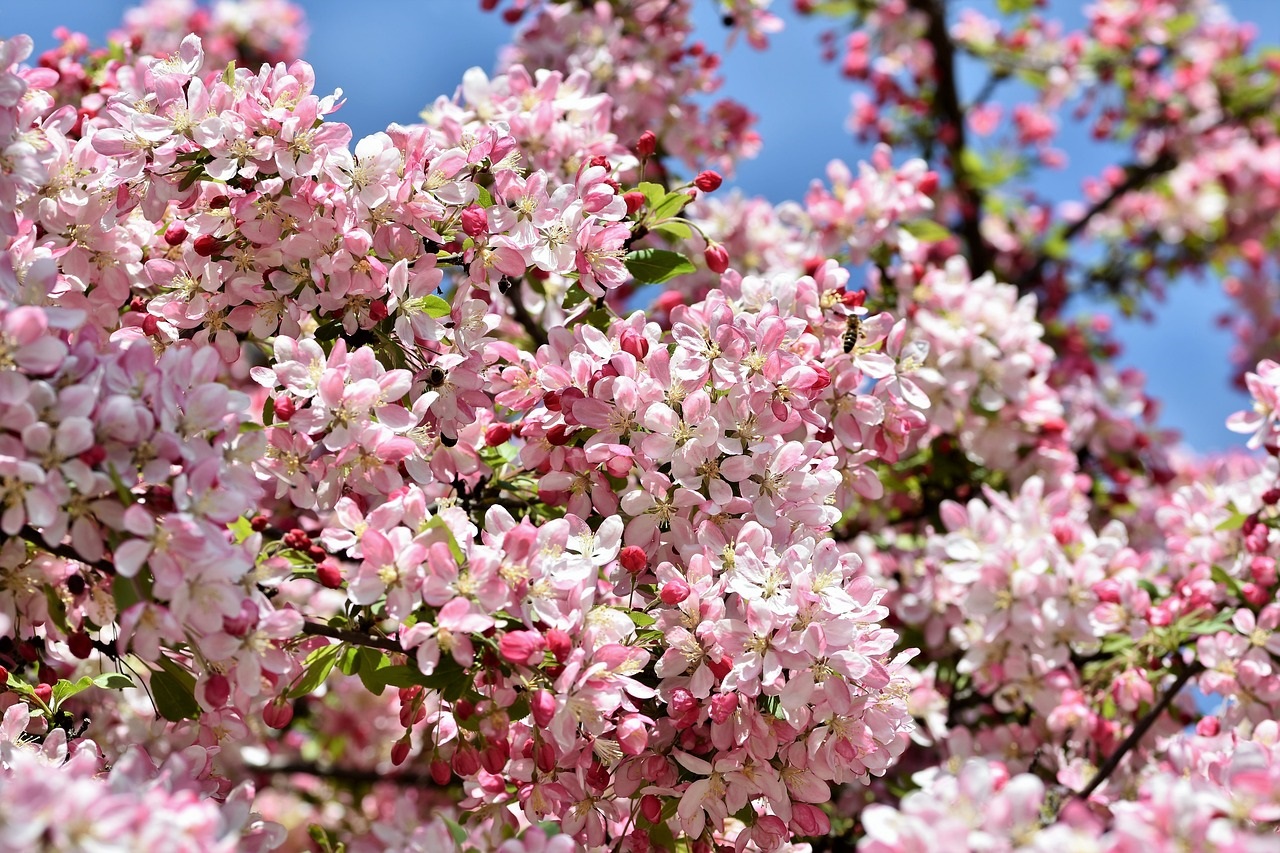
As you can see from the crab apple blossom photo above, the flowers are every bit as beautiful as ornamental cherry blossom.
Rootstocks explained
Within the realms of apple tree growing, the rootstocks that produce larger trees are normally classed as vigorous or very vigorous, being M111; M25 and M106. These trees are likely to grow to a height and spread of 5m or more. The semi-vigorous, medium-sized tree is generally grown on the M26 rootstock and this can be expected to grow up to 4m tall, often with a similar spread. The M9 rootstock is described as a dwarf, bush tree, which grows up to 3m tall and it tends to be very popular for those planting intensive orchards because of the heavy cropping ratio and early fruit yields. A tree grown on a miniature rootstock, M27, will grow into a bush-shape, maturing to just around 2m tall. Even though it's a small tree, the yields are excellent.
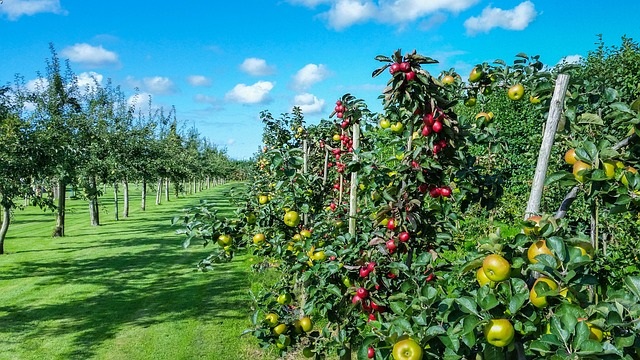
It's not just the rootstock that determines the vigour and fruit-yielding success of a tree. The soil type is important too, with a good loam containing clay being better than light, sandy or chalky soils. Feeding and watering play a part too, so the success of a fruit tree can be influenced by its carer!
When it comes to pear trees, the rootstock Quince A is the most commonly used. The tree can grow up to 6m tall, or a smaller one can be achieved on the Quince C rootstock.
Smaller plums and gage trees tend to be grown on the Pixy or Ferlenain rootstocks, which are considered ideal for fan-trained trees or small pyramid-shaped bushes. St Julien A is also frequently used to produce a semi-vigorous tree which will grow to a height of up to 4.5m tall. This semi-dwarfing rootstock is recommended because of its extra vigour.
Productive cherry trees are most frequently grown onto the semi-vigorous Colt rootstock, which restricts their growth to a height of up to 8m tall. Smaller cherries will use a semi-dwarfing rootstock such as Gisela 5 or Tabel, resulting in a tree growing to a height and spread of up to 4m.
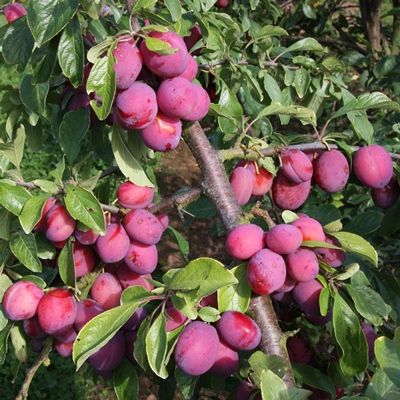
Above: the Victoria plum tree is probably the nation's favourite!
Fan-trained, espalier and cordon fruit trees
Not everyone has room for a free-standing fruit tree in their garden. However, gardens generally have boundaries of some sort, and this makes it possible to accommodate a trained fruit tree, which can be grown against a fence or wall. A south or south-west-facing wall is ideal for a tree that has been trained as a fan or espalier shape. Pictured below, left, is a young, fan-trained tree. It can eventually grow into a magnificent and eye-catching specimen similar to the one on the right! A tree grown in this way will still provide fruit and makes picking very easy!
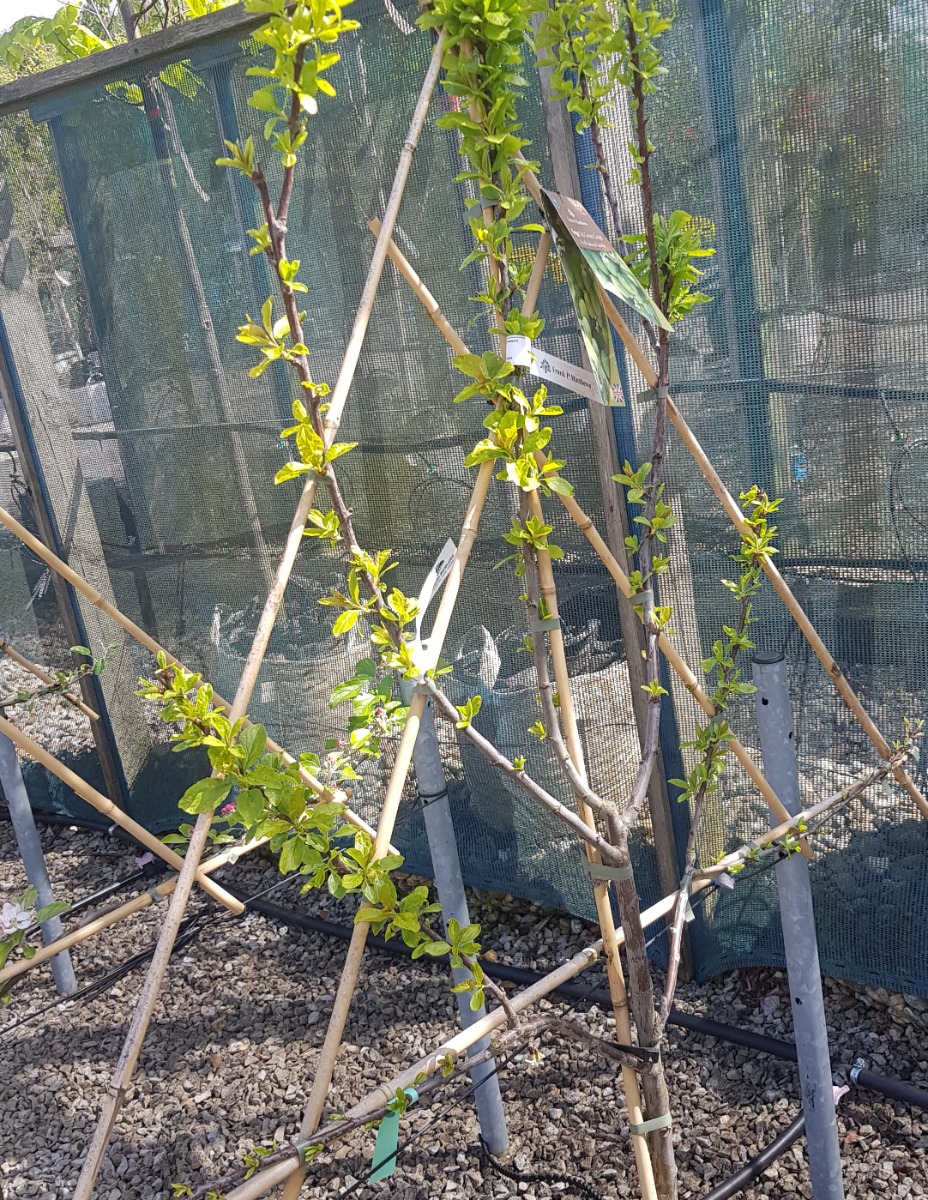
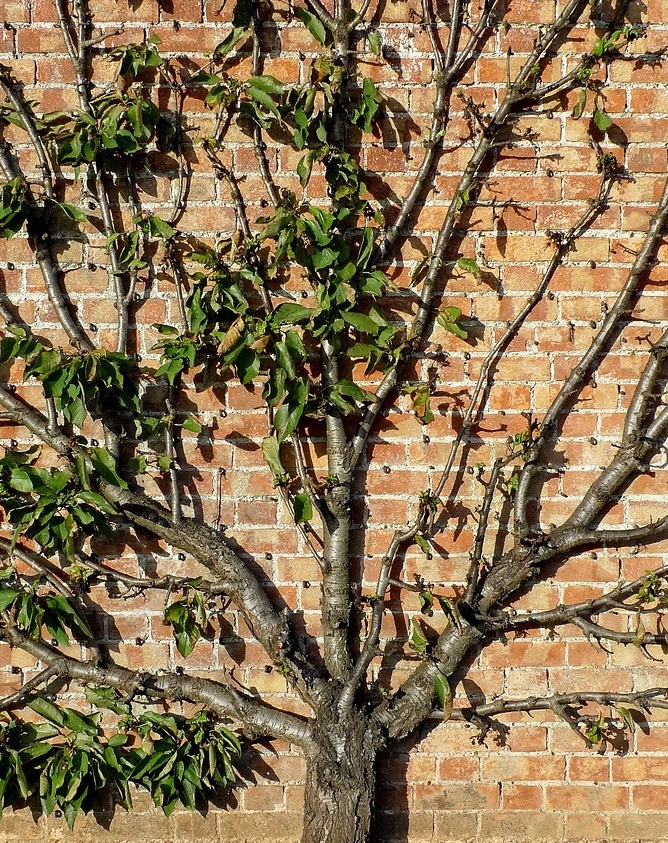
Trained fruit trees require pruning twice per year. During summer, surplus branches should be cut back, then promising shoots should be trained in. During winter, new wood that isn't required can be removed, and older branches can be reconsidered.
What do we mean by self-pollinating?
In order to produce fruit, flowers need to be pollinated. In a garden or natural setting, this is carried out by insects such as bees, flies and wasps. The sight and scent of blossom attracts insects, which collect their 'prize' - sweet nectar!
When snacking from the sweet buffet, insects collect pollen from the plant's male anthers. It is then transferred to other flowers, where it is rubbed onto the female stigma. Part of the pollen travels down a tube into the ovary, which fertilises the tree.

Even self-fertile varieties still need the pollen to be transferred from one flower to another, but the flowers on the SAME tree are able to pollinate each other. However, if the variety isn't self-fertile, it will need a different variety nearby in order to achieve pollination.
Below is the spring blossom of Apple 'Red Devil', a variety bred in Kent and named after the Red Devil parachute display team. The sweet, bright red fruit has flesh that is stained red when ripe, and it is reputed to taste rather like strawberries! A dessert apple that stores very well, it can also be used for juicing, and the liquid is pink! Ready to harvest in mid-autumn, from September onwards.
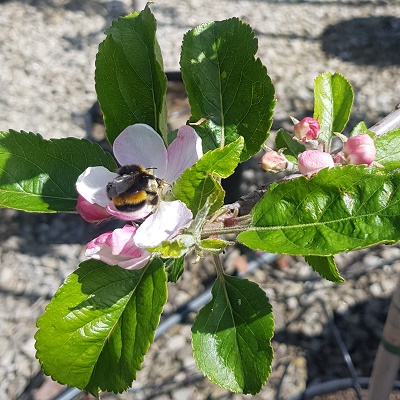
In addition to more than a dozen apple varieties, English Woodlands also stocks pear trees. Pictured below is the blossom of the popular, award-winning Williams pear. It is one of the most popular of the old English varieties, producing reliable crops of golden yellow, juicy and sweet fruit. Did you know that the Williams pear originated from Berkshire during the 18th century? It was discovered by schoolteacher Mr Wheeler, who found it growing in his garden. A nurseryman named Mr Williams eventually grafted the pear onto reliable rootstock.
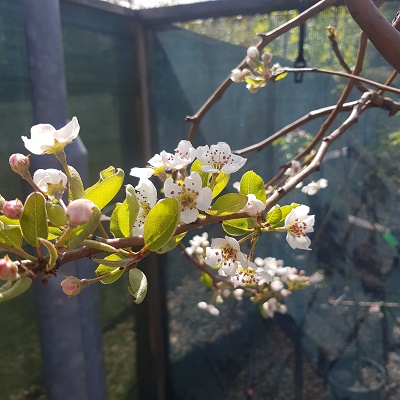
English Woodlands offers a range of other fruit trees including cherries; figs; gage; nuts; plums; and mulberry.
View the full range of fruit trees HERE

